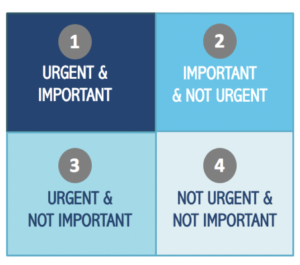Educators are master planners. You can see both the big picture and details to deliver. As schools begin to communicate their distance learning plans and engage their families in implementing them, school districts need to coordinate their response and streamline their communications.
Every teacher sending an email to parents is not a best practice. Rather, schools and districts together need to provide coordinated, clear messaging, systems and plans.
In this guide, MREA shares:
- Key communication points to help families navigate distance learning
- How to communicate the district’s Distance Learning Plan
- Communicating during an extended period of distance learning
In all communications, inform your staff and school board first before sharing with parents and students and your broader community.
Key Points
Help your families navigate distance learning and their responsibilities by following these key steps:
1. Coordinate Communications
Coordinate communications to send as few emails and messages as possible. Preparation is key. Distribute as much communication as you can from the top – from the superintendent for the entire district. As needed, principals should share communication for schools and buildings. Be coordinated at all levels with your response. Identify spokespersons and flow communication through them.
2. Map Communications
Districts, schools and teachers have a wealth of information you want – and need – to share with families to implement distance learning. Create a map of this information to help prioritize it. Messages on core subjects, for example, should be shared before messages on special or elective subjects. Don’t send everything in one day. Encourage the same process to be followed by building and by grade.
There is a lot of information you can share. Focus on what’s urgent AND important. This decision-making grid, developed by Stephen Covey, should be applied to communications.
 Based on this, your communications can be organized into four key tiers, in order of hierarchy:
Based on this, your communications can be organized into four key tiers, in order of hierarchy:
- Urgent and Important Communications
- Important Communications (that are not time sensitive)
- Urgent Communications (that are not mission critical)
- Not Urgent or Mission Critical
Keep in mind these words from Covey: “What is important is seldom urgent and what is urgent is seldom important.”
Crises typically fall into the first tier (or quadrant). However, not all your communications in your distance learning implementation should be considered urgent or important. Step back and assess all of your distance learning communications using this grid to help prioritize the information.
When executing distance learning, you will likely share urgent/important information (quadrant 1) at least daily and important/not urgent information (quadrant 2) at least weekly.
3. Break It Down
Just like when teaching a lesson, schools need to break down the information in easy-to-understand components. Provide students and their families with what they need to focus on now. Briefly share what to expect next.
Sharing Your Distance Learning Plan
Minnesota schools need to share the distance learning plans you have developed with your parents by next week, whether or not your plans are executed.
Superintendents should provide an overview of the district-wide distance learning plan. Keep this succinct and focused on what parents need to know and where they can go to learn more. Outline the key elements and share this information in bullets, rather than narratives.
Key information to share includes:
- Daily assignments: Where does our family go to view daily work?
- Materials and delivery: How will we receive print materials and other non-digital items?
- Key contact: How do I contact my teacher? Who do I contact with general questions on distance learning? What do I contact for technology help?
Communication tools and methods to consider:
- Website: The Minnesota Department of Education (MDE) wants the plans online by March 27. Provide a link to the full plan on your district’s website. Consider creating a page, or set or pages, on your district’s website with details on how you handle district learning. if possible, create a simple URL such as districtname.edu/distancelearning. Be sure that the link to this page is easy to find on the district’s home page during a distance learning period.
- 5 Things to Know: In your initial communication, consider framing it as “5 Things to Know” about the district’s plan. This should be focused on key messages parents need to know. It can be shared as a starting point on the website, in email and in print.
- One-Page Roadmap: It also could be valuable to include an at-a-glance grid of the distance learning plan by grade that would allow parents to see an overview of the core components of the plan in one page. This could also be a resource shared online and in print.
Communicating During Distance Learning
Communication with both students and their parents or guardians will become even more critical when schools implement distance learning.
Key steps to take when preparing to communicate during a time of extended distance learning:
1. Set expectations.
Take one step at a time and act as a tour guide for your families as they embark with you on this new adventure. Communicate that it is your desire to guide parents through this, and together you will take one step a time. Be mindful of your tone in each communication and begin and end each message with a positive message. Schools – both through learning and your communications – provide stability for families during this unsettling time.
2. Establish a schedule for communicating.
You want to create a comfortable rhythm in your communication with your parents – as superintendent and as a principal. Outline when and how you will provide standard communications and share your plans with your families.
Coordinate the superintendent and principal communications in terms or timing and content. Teachers also should set a schedule and this should be coordinated across the district.
3. Create a central information site.
Develop a central information site on your district website so your families know where to go daily to learn what they need to know for all classes. Schools likely will use multiple tools for learning and interactions with teachers. Your central information site should be your one source for daily communication. Post your information here rather than relying on daily emails.
- Streamline the view. Make it easy to see the essential information without scrolling.
- Provide an overview of what families need to know for today.
- Establish a template for how this information is organized and shared.
- Set guidelines for how your teachers will update this information.
Do the work on the back end with your school staff for consistency so your information and directions are easy for your families to follow and act on. Keep the focus on what they need to know today and include an area of what’s coming next (lesson plans for the following day).
……………………………
Taking Action
MREA developed a series of guides to help schools respond and plan for the spread of COVID-19:
- Distance Learning: Guide to Communicating with Families
- Distance Learning: Putting It All Together
- Steps to Respond & Communicate
- How to Plan for Distance Learning
Stay Connected
Stay apprised of resources and news on COVID-19 for schools at: MREAvoice.org/covid19





